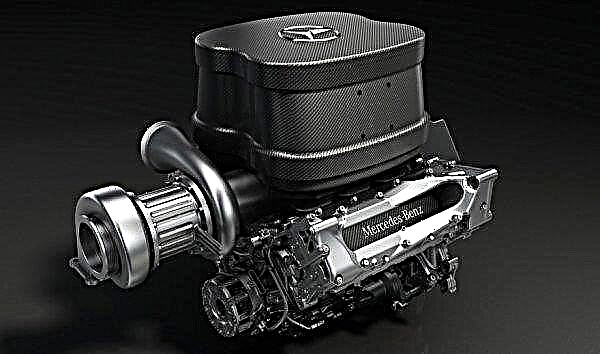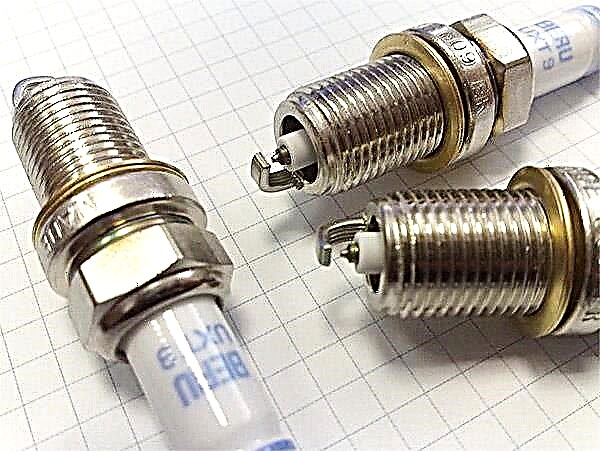

The content of the article:
- Top "brittle" motors
Reliable million-plus engines are a thing of the past. They are being replaced by modern motors, from which the owners expect technological miracles, getting a bunch of problems instead of long and reliable work.
It is especially sad to realize that even venerable concerns make unforgivable blunders, undermining faith in the inviolability of German quality.
Top "brittle" motors
BMW N46

Bavarian motors suffer from "chronic diseases". The most annoying thing is that the engines of this model are mass-produced. It seems that the power unit was manufactured by BMW engineers with the requirement to be tied to frequent and expensive certified service.
A decade ago, the N42 engines were produced, after improvements and modifications were turned into the N46. Structurally and in terms of "sores", they remained extremely similar.
Despite the fact that the 1.8 and 2 liter engines were slowly but surely being replaced by the turbocharged N13, the market was literally flooded with them, and the chance to get the N42 under the hood of the purchased car remained extremely high.
The engineers really wanted to teach the engine to save fuel and released a new product on the market - N46. Problems, in theory, as with the previous model, should not have been. The non-turbocharged engine with a moderate number of "horses" (156) and standard four cylinders seemed reliable and durable. Only now, fuel economy at the time of idling with the ability to provide high power under sudden loads turned out to be a "Trojan horse".
The power unit turned out to be overly complex at the output, including many super-technological developments - the Valvetronic throttleless intake or the Double Vanos timing system. Only "complete" with good ideas did the engine reach an extremely high temperature, resulting in oil coking.
Serial engines with the letter "N" are considered the successors of the "M" series since 2001. Finally, the "plate" has ceased to be installed on BMW cars since 2006, with the exception of the M-Sport model range. To increase consumer interest, new installations were offered for every taste, with a large selection of the number of cylinders (from R4 to V12) and engine displacement (from 1.6 to 6.6 liters).
As a result of engineering tweaks, the N46 engine works great. But no more than three years. Then "the carriage turns into a pumpkin", and the valve stem seals - into dust. Behind them, the timing belt crumbles, dragging along the way plastic guides and washers into the crankcase. But this is just the beginning ...
Oil deposits adversely affect the functioning of the vaunted Double Vanos system and Valvetronic hydraulics, rendering them unusable. The result is a BMW four-year-old with an unreasonable amount of oil. Along the way, the electrician and the timing drive can deteriorate and fail.
For those who are "lucky" to become the owners of a car with an N46 engine (most likely - a 1, 3, 5 series sedan or a compact XZ), it is important to constantly monitor the operation of the engine so as not to miss a major overhaul "according to plan", because if the engine is lost just become a piece of useless iron.
They try to delay the inevitable breakdown by refueling the car with the best and purest 98th gasoline and very often pouring fresh oil. This extends life, but the specter of overhaul still hangs over the car.
Another problem with N-series powertrains is the missing oil dipstick. Its function is performed by a very buggy sensor, lying so that the car can simply remain "dry", given that the engine not only "eats" oil, but also lets it through.
The result is oil starvation, stretching the timing chain to 60 thousand mileage.
A collapsing tensioner is also a separate problem, which, in the event of overheating, can lead to deformation of the inter-cylinder baffle. The valve stem seals have an extremely short service life of 30,000 km.
After 60,000 km, the oil separating membrane dries up, which must be replaced entirely with the valve cover. If you miss this replacement, the valve wedges, which leads to an increase in pressure in the cooling system, after which all the coolant joyfully breaks free through the radiator and pipes. Well, by 100,000 km, the electric pump of the N46 series engines fails.
Engines on which direct injection takes place quickly fail injectors, unburned fuel in the cylinders leads to a water hammer. When gasoline enters the cylinders, the spark plugs become unusable, the coils "fly out".
A mileage of 200,000 km without engine repair is an almost unattainable ideal. Of course, the power units are sleeveless, but still this is a direct path to the secondary market.
Separately, it should be said about the "disease" of the V8 engine, in which leaking gasoline washes away the oil film on the cylinder walls, creating seizure marks. Finely dispersed ceramic particles from the catalyst also fly straight into the cylinders. The revs increase even on a cold engine ...
Meanwhile, despite the obviously obvious shoals, the N-series represented by various models was recognized ... the best! This is confirmed by victories in many nominations of the international Engine of the Year competition.
Mercedes M272 / M273

In the photo: Mercedes M272
The Stuttgart designers made a big break in 2004, releasing a very interesting engine with significant efficiency and torque. Initially, succumbing to euphoria, engines began to be installed on the overwhelming number of Mercedes models with a volume of 2.5 to 3.5 liters and a wide range of "horses" (201-316). Even SUVs were equipped with the engine of this line.
The motors were called the best, most advanced in the global automotive industry, especially in terms of the steepness of the all-aluminum blocks with four cylinders hidden in the valve! Only delight quickly gave way to bitter disappointment.
The predecessor of the M272 was the 112 engine, where the cylinders and cast-iron blocks were located in a fundamentally different way, which were subsequently replaced by aluminum counterparts. The sleeves were also made with the addition of silicon using a special Mersov technology Silitec.
The timing drive was a chain, covering a single balance shaft in the collapse. Another difference was three valves, a cylinder with two spark plugs and oil injectors cooling the pistons from below.
The engine was installed on Mercedes cars until 2006, on the Crossfire model, lasting until 2008. But already in 2004, they began to install a "more advanced" power unit - the V-shaped "six" M272.
In general, she had a similar camber of 90 degrees with a balance shaft and a similar block manufacturing technology. The new 272th had three versions - 2.5 / 3.0 / 3.5 liters, which included systems (changing the valve timing and geometry of the intake tract), four valves plus a single spark plug in the cylinder. On the 3.5-liter power unit, it was used simultaneously with the CGI distributed direct fuel injection.
The M112 and M113 engines were quite capricious about the quality of gasoline. The use of low-quality fuel led to sintering of the ceramic filler of the catalyst, the dust from which is directly sent to the cylinders.
Sometimes, after the "autopsy", the craftsmen just shrugged their shoulders - the inside of the engine seemed clogged with sand.
If it is possible to control the quality of the fuel, the 112th could be operated for a long time. Even the timing chain, which has become a standard consumable, begins to stretch only after reaching a mileage of 100,000 km.
On the updated M272, the same chain fell into disrepair by 40,000 km, and if it was missed, it would happily rush to the meeting of valves with pistons. The valve stem seals on the new powertrain coked up the valve stems, accelerating camshaft breakage.From time to time, the broken flaps of the intake tract axle fell under the valves, and by 60,000 km the balance wheel sprockets wore out. And replacing the sprocket required removing and disassembling the engine to fix the problem.
Engine models M276 and M278, released since 2010, managed to overcome the "sores" of the timing, acquiring the problem of draining gasoline from the injectors into the oil, killing the timing mechanism of the chain. The unlucky power units M112 and M113 entered the popular memory as unreliable, although they were designed by engineers of the "quality standard".
Volkswagen EA111

The Wolsburg designers also supported the sad "initiative" of the Bavarian colleagues. They dreamed of a revolutionary breakthrough in engine building, creating a "dream" that is the perfect harmony of power and efficiency. Alas, the "automobile grail" was never created.
But happiness seemed to be near! When the EA111 engines came out in 2005, represented in the line of atmospheric and turbocharged units, people were jubilant until they found out that their reliability tends to zero.
The 1.4 TS power unit based on direct injection was recognized as the most disgusting. Behind him in the anti-rating was the naturally aspirated 1.6 FSI engine, and the third prize was taken by the weak 1.2 TSI.
The 1.2-liter "kid" had only two, but extremely serious problems. Every 30,000 km, the timing chain had to be replaced, and the turbine was constantly “moping”.
The 1.4-liter sibling unfortunately could not withstand the horsepower load. In the "strongest" version there were 180 of them, in light versions - from 122 to 140, but even this turned out to be excessive. The compression ratio turned out to be too high, causing detonation during operation even on 95th gasoline.
The turbine was regularly contaminated in the turbocharger section with oil that flew from the crankcase ventilation. Domestic gasoline turned out to be a cruel test for direct injection nozzles. In parallel with the filters, they were constantly getting dirty, and the pump just flew into the trash.
The timing chain did not stretch, but simply jumped when the motor moved backward (which happens when towing or evacuating), injuring the valves. The atmospheric engine had problems with the low strength of the crankshaft liners, chain and piston breakages.
New motors are gradually "recovering", but the residue remains.
BMW N47

The motors, which appeared in 2007, were installed on most models, with the exception of luxury ones. Not a bad volume from 1.6 to 3 liters with a power of 218 hp. did not bode well for a technical breakthrough or trouble. They are widespread, but unreliable.
The timing chain needs to be replaced for 60,000 km, but to replace it, the engine must be removed. As soon as the owners of cars with N47 hear the characteristic hum, they rush to the car service. After all, if you do not immediately change the chain, then the car will begin to malfunction, lose power and simply become unusable, putting the owner before the choice of a complete engine repair or buying a new car.
The second big miscalculation was the breakdown of the intake manifold flaps, which enter the cylinders and clog under the valves. Replacing capricious piezoelectric nozzles will cost 100,000 rubles.
Mitsubishi 4D55 / 4D56

In the photo: Mitsubishi 4D55
The Japanese car industry has also distinguished itself. Since the 1980s, the production of low-power (75 hp) engines with a volume of 2.3-2.5 liters began, which are still installed on most Mitsubishi models.
At first they were reliable, but the desire to improve has played a cruel joke. After the addition of the turbine to the design, the engines acquired a lot of problems. Sharply increased to 178 hp. power has led to frequent breakdown of camshafts, cracks in the cylinder head, constant overheating, timing belt breaks.
The powertrains rarely groomed more than 100,000 km without problems.
Conclusion
The list can be supplemented and expanded, but what is striking is that it is mainly the most advanced developments that suffer, often with the "turbo" mark. Turbocharging has become a completely mundane procedure. And since the beginning of the 21st century, designers who have been keen on the search for the "holy grail" of economy and environmental friendliness have created many complex motors with a high thermal load.
Therefore, when choosing a car, pay attention to the simplicity of the motor and its power indicators. Modest engines can last longer and more reliable than flared counterparts. All kinds of "highly reliable" turbines, "supercoatings" of pistons, "smart" pumps do not add, but rather harm the operation of the engine after a short period of time, but their market price is much higher.











